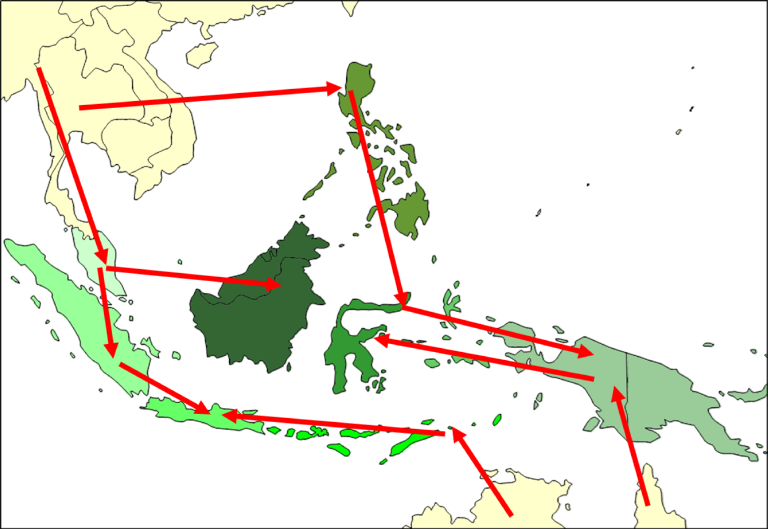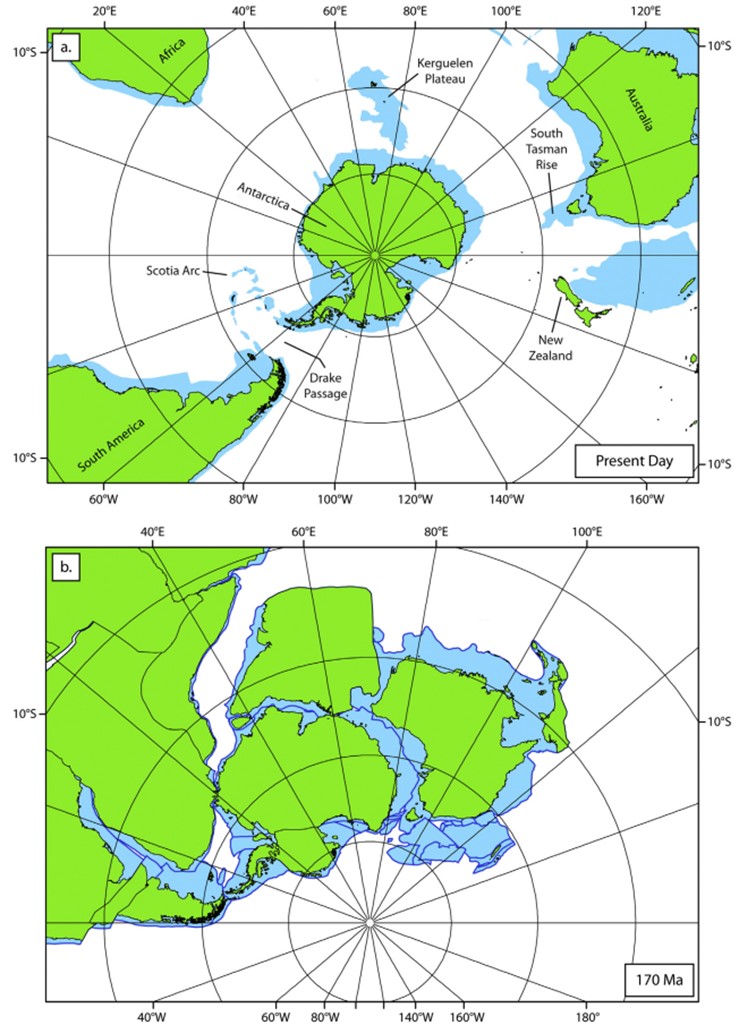
The geological history of the Malay Archipelago, better known as Malesia, is an amalgamation of small tectonic plates that mainly moved below water. This means that the present rich flora of this tropical area must have ancestors from surrounding areas, perhaps from northern Australia. What is the floristic origin of part of the Malesian flora?

Backgroundand context
The current flora of Malesia may have multiple sources. First, Malesia appears to have been populated mainly from the SE Asia mainland via the Malay Peninsula. A second source seems to be New Guinea and NE Australia (also via dispersal from Antarctica and S. America; see figure). A poor source appears to be SE Asia via the Philippines, while a fourth possible source is from northern Australia via the southern Moluccas and eastern Lesser Sunda Islands. Part of the southern Moluccas and Easterm Lesser Sunda Islands were attached to north Australia and drifted north and reached their present position only a few million years ago. Thus it is likely that there is an overlap in flora.
Objectivesand goals
This internship project is focused on comparing the flora of the Moluccas and Lesser Sunda Islands with that of northern Australia. You will investigate how many of the families, genera, and species are present occur in both areas, and you will try to find (dated) phylogenies that show a clade in Australia and in Malesia, which would indicate dispersal to Malesia followed by speciation.
Materialsand methods
The plant database of Naturalis and GBIF will provide many names of species. The names have to be cleaned (most modern and accepted names have to be used). As a next step, you will compare what is present in both areas. Widespread species may indicate dispersal from Australia to Malesia (or the other way round). Then you will try to find dated phylogenies for the genera present at both sides, and determine if there are different clades in the different parts (one clade in Australia, the other in the Lesser Sunda Islands and Moluccas). This may indicate dispersal from N Australia to Malesia.
Studentrequirements
This project is especially suitable for students with an interest in geology (especially plate tectonics), with an understanding of phylogenetic ideas and methodology, and with computer skills.
References
van den Ende C, White LT, van Welzen PC. 2017. The existence and break-up of the Antarctic land bridge as indicated by both amphi-Pacific distributions and tectonics. Gondwana Research 44: 219-227.